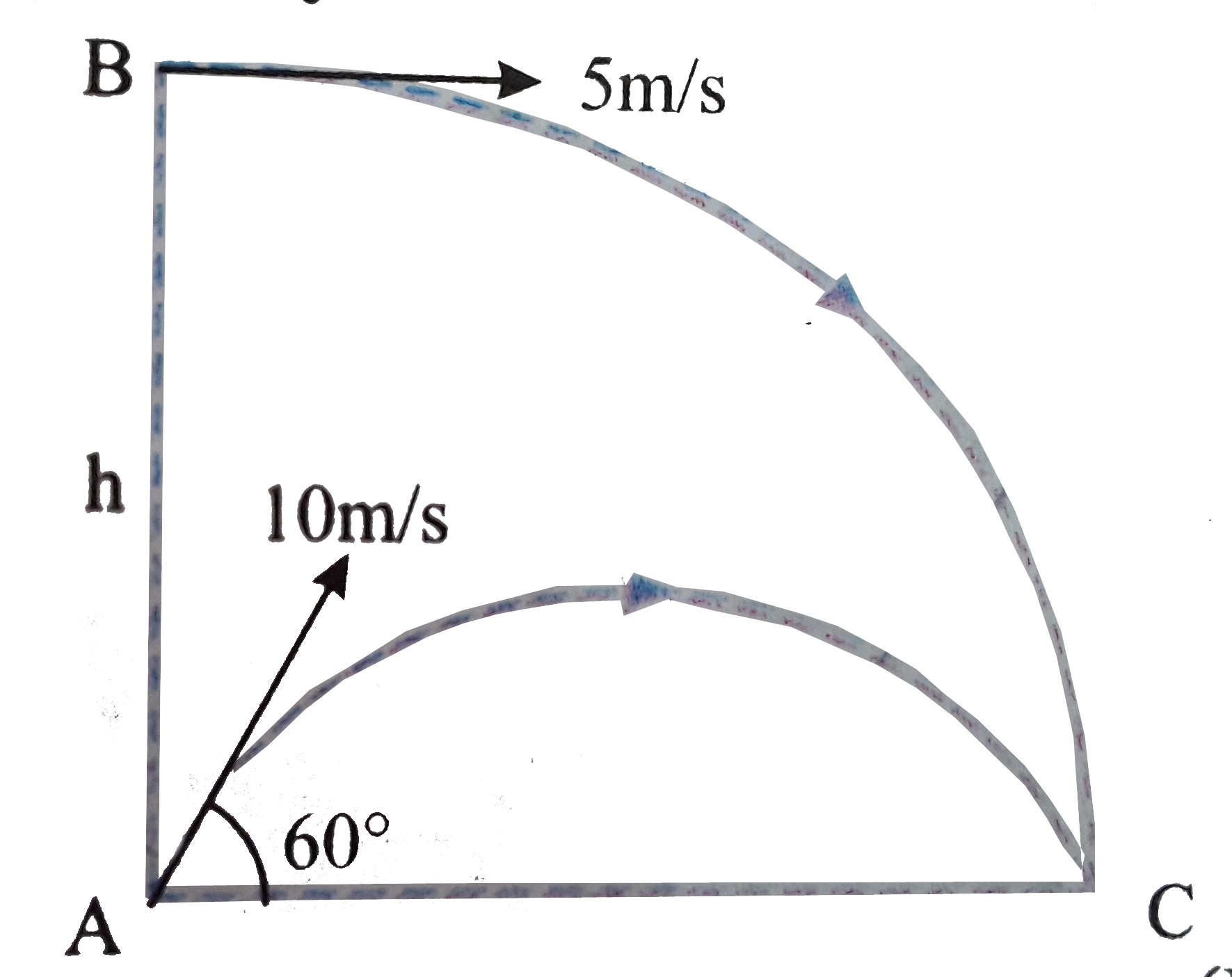With what velocity should a particle be projected so that its height becomes equal to radius of earth ?
(GMR)1/2
(8GMR)1/2
(2GMR)1/2
(4GMR)1/2
The correct Answer is:A
To find the velocity with which a particle should be projected so that its height becomes equal to the radius of the Earth, we can use the principle of conservation of energy. Here's a step-by-step solution:
Step 1: Define the problem
We need to determine the initial velocity V required to project a particle from the surface of the Earth to a height equal to the radius of the Earth r.
Step 2: Understand the energy conservation principle
The total mechanical energy (kinetic energy + potential energy) of the particle must remain constant throughout its motion, as there are no external forces doing work on it.
Step 3: Write the expressions for potential energy
1. At the surface of the Earth (height = 0), the potential energy PE1 is given by:
PE1=−GMmr
where G is the gravitational constant, M is the mass of the Earth, m is the mass of the particle, and r is the radius of the Earth.
2. At the maximum height (which is equal to the radius of the Earth), the total distance from the center of the Earth is 2r. The potential energy PE2 at this height is:
PE2=−GMm2r
Step 4: Write the expressions for kinetic energy
1. The kinetic energy KE1 at the surface of the Earth when the particle is projected with velocity V is:
KE1=12mV2
2. At the maximum height, the kinetic energy KE2 is zero because the particle momentarily comes to rest:
KE2=0
Step 5: Apply conservation of energy
According to the conservation of energy:
KE1+PE1=KE2+PE2
Substituting the expressions we have:
12mV2−GMmr=0−GMm2r
Step 6: Simplify the equation
Rearranging the equation gives:
12mV2=GMmr−GMm2r
12mV2=GMm2r
Step 7: Cancel out the mass of the particle
Since m is present in all terms, we can cancel it out:
12V2=GM2r
Step 8: Solve for V
Multiplying both sides by 2 gives:
V2=GMr
Taking the square root of both sides results in:
V=√GMr
Final Answer
The velocity with which the particle should be projected is:
V=√GMr
---
We need to determine the initial velocity V required to project a particle from the surface of the Earth to a height equal to the radius of the Earth r.
The total mechanical energy (kinetic energy + potential energy) of the particle must remain constant throughout its motion, as there are no external forces doing work on it.
1. At the surface of the Earth (height = 0), the potential energy PE1 is given by:
PE1=−GMmr
where G is the gravitational constant, M is the mass of the Earth, m is the mass of the particle, and r is the radius of the Earth.
PE2=−GMm2r
1. The kinetic energy KE1 at the surface of the Earth when the particle is projected with velocity V is:
KE1=12mV2
KE2=0
According to the conservation of energy:
KE1+PE1=KE2+PE2
Substituting the expressions we have:
12mV2−GMmr=0−GMm2r
Rearranging the equation gives:
12mV2=GMmr−GMm2r
12mV2=GMm2r
Since m is present in all terms, we can cancel it out:
12V2=GM2r
Multiplying both sides by 2 gives:
V2=GMr
Taking the square root of both sides results in:
V=√GMr
The velocity with which the particle should be projected is:
V=√GMr
Topper's Solved these Questions
- GRAVITATION BOOK - AAKASH INSTITUTECHAPTER - GRAVITATION EXERCISE - ASSIGNMENT SECTION - D (ASSERTION-REASON TYPE QUESTIONS)
16 Videos
- GRAVITATION BOOK - AAKASH INSTITUTECHAPTER - GRAVITATION EXERCISE - ASSIGNMENT SECTION - B (OBJECTIVE TYPE QUESTIONS)
26 Videos
- ELECTROSTATIC POTENTIAL AND CAPACITANCE BOOK - AAKASH INSTITUTECHAPTER - ELECTROSTATIC POTENTIAL AND CAPACITANCE EXERCISE - ASSIGNMENT SECTION - D
13 Videos
- KINETIC THEORYBOOK - AAKASH INSTITUTECHAPTER - KINETIC THEORYEXERCISE - EXERCISE (ASSIGNMENT) SECTION - D Assertion - Reason Type Questions
10 Videos
Similar Questions
With what minimum velocity v should a particle be thrown horizontally from a height h above the surface of the earth of mass M so that it does not fall back on the earth ? Radius of earth is R ?
View SolutionBy what facter should the velocity of a moving particle be changed so that its kinetic energy becomes 1/16 of its intial value ?
View Solution
Knowledge Check
With what velocity should a particle be projected so that is height becomes equal to radius of earth ?
A(GMR)3/2B(8GMR)1/2C(2GMR)1/2D(4GMR)1/2With what velocity should a particle be projected so that its maximum height attained becomes equal to radius of earth ?
A(GMR)1/2B(8GMR)1/2C(2GMR)1/2D(4GMR)1/2At what angle to the horizontal should an object be projected so that the maximum height reached is equal to the horizontal range.
Atanθ=2Btanθ=4Ctanθ=3Dtanθ=3
What is the value of the acceleration due to gravity at a height equal to radius of earth?
View SolutionAt what angle to the horizontal should an object be projected so that the maximum height reached is equal to the horizontal range.
View SolutionA body is projected vertically up from surface of the earth with a velocity half of escape velocity. The ratio of its maximum height of ascent and radius of earth is
View Solutionwhat should be the velocity of an electron so that its momentum becomes equal to that of a photon of wavelength 5200Å
View SolutionA particle A is projected from the ground with an initial velocity of 10m/s at an angle of 60∘ with horizontal. From what height should an another particle B be projected horizontally with velocity 5m/s so that both the particles collide in ground at point C if both are projected simultaneously g=10m/s2.

View Solution
